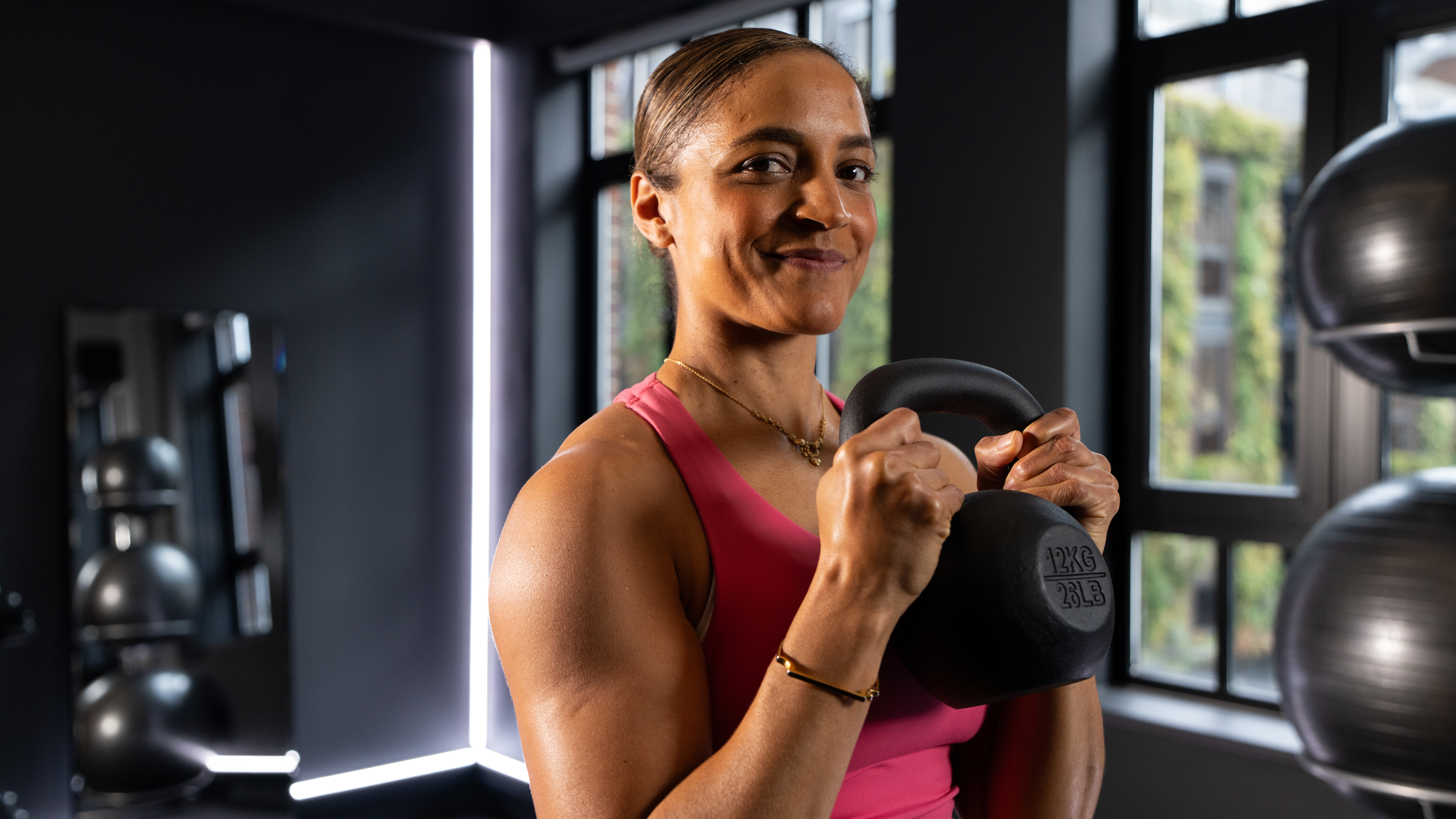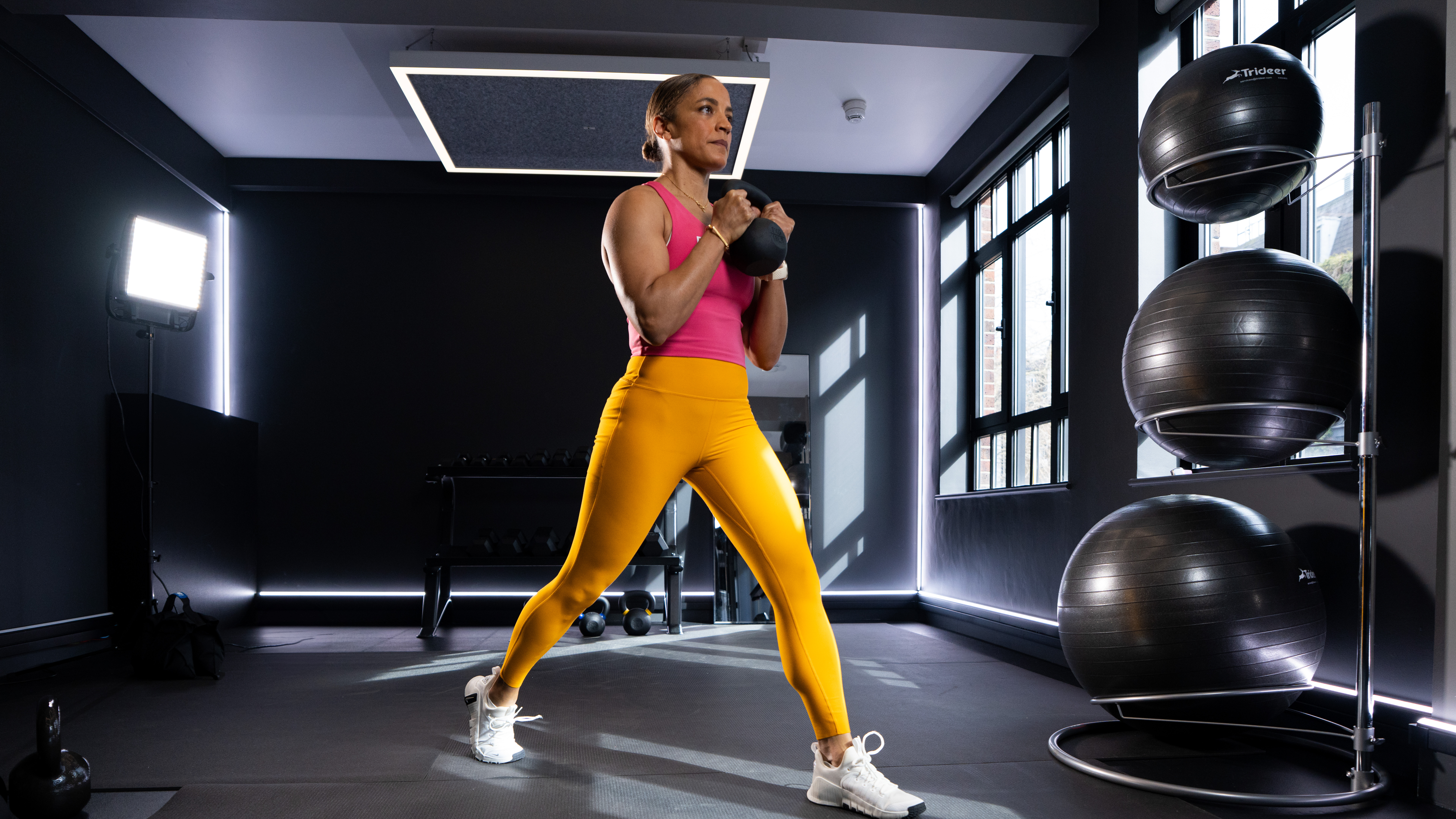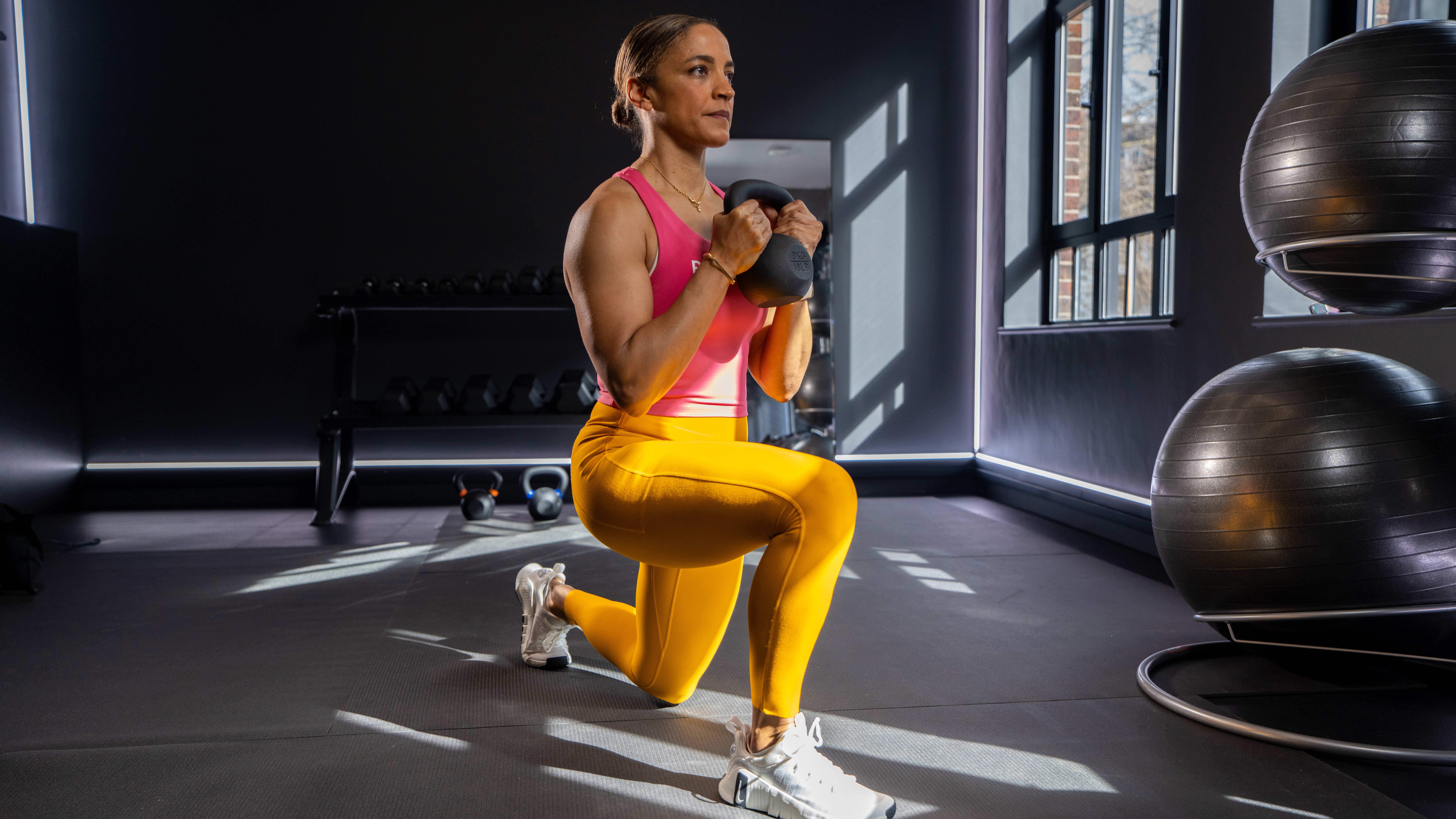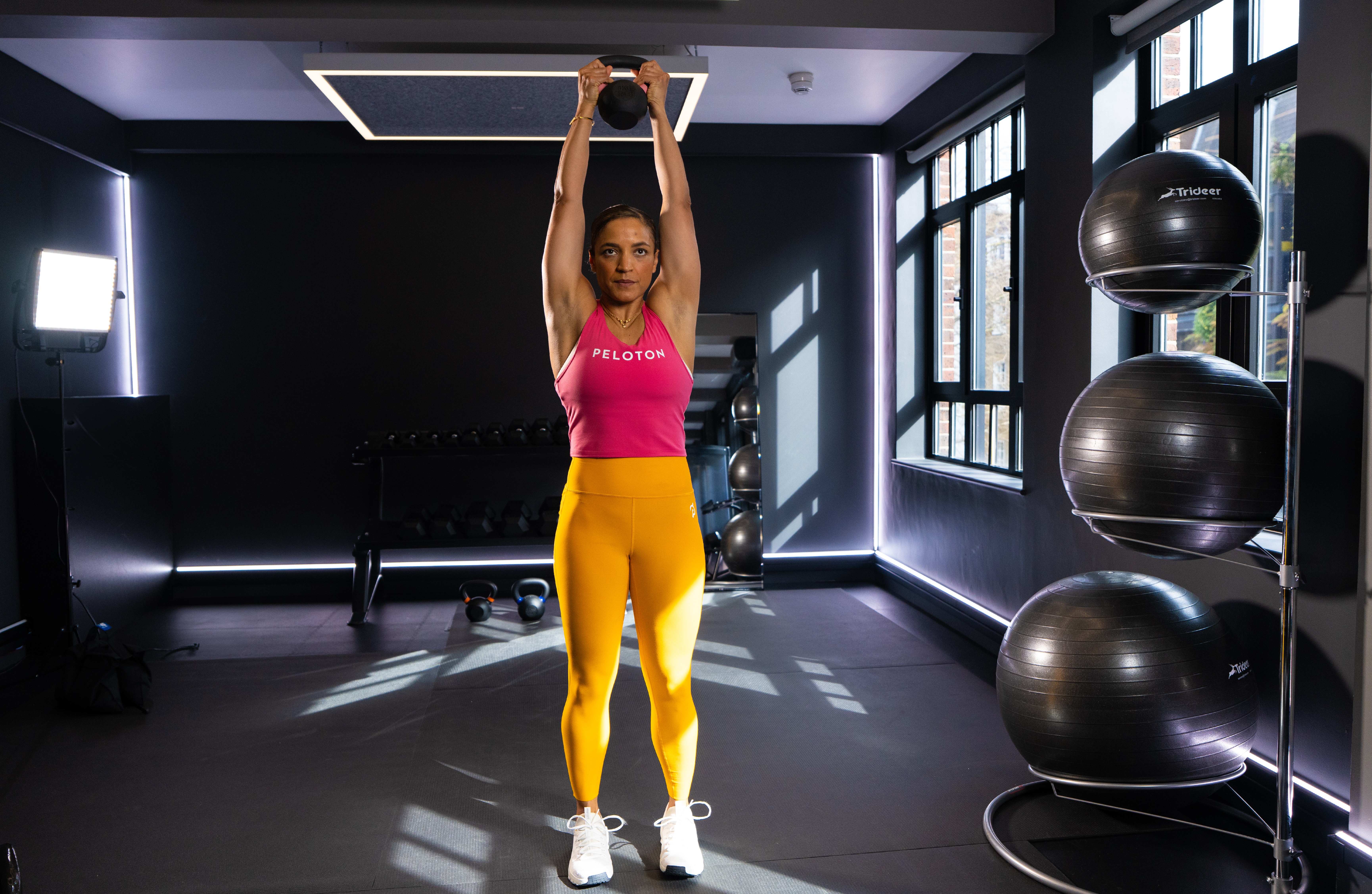
Hands up who’s a little bit scared of kettlebells? I know it’s a piece of gym equipment I avoided for a long time.
When I first started using them, I found them unwieldy, and I kept clipping my wrist when I tried moves like the kettlebell clean.
However, I recently chatted with Joslyn Thompson Rule, an expert trainer at Peloton, who assured me that kettlebells are a great training tool for everyone, even beginners.
You just have to start with the right moves.
“Kettlebells challenge you in new ways—what I like about them is that you have to be a little bit more connected to your body [when using them]. By default you have to just be a little bit more aware of how you're moving,” says Thompson Rule.
Three kettlebell exercises for beginners
Thompson Rule advises beginners to avoid complicated moves like the clean and swing, which typically require three to six months of experience of handling kettlebells first.
Instead, she suggests focusing on simpler moves like the split squat, two-handed overhead press and the farmer’s carry.
Practicing these moves will help you get used to the weight and shape of the kettlebells, so you can move on to other moves. And if you want more workouts like these, you can find them on the Peloton app, which has a 30-day free trial.
1. Split squat


Sets: 3 Reps: 8 each side
How to do it:
- Stand with your feet shoulder-width apart, holding a kettlebell in both hands in front of your chest.
- Step your right foot back and remain in this split stance throughout.
- Bend both knees to lower until both knees are bent to 90°.
- Your left knee should be above your left ankle and your right knee should be just above the floor. Reset and adjust your stance if this isn’t the case.
- Push through the heel of your left foot to rise.
- Complete all the repetitions on one side, then switch sides.
Thompson Rule says: “Your lower body is primarily doing the work in a split squat, but your core will also be working to stabilize you.”
2. Overhead press

Sets: 3 Reps: 8
How to do it:
- Stand with your feet shoulder-width apart, holding a kettlebell in both hands in front of your chest.
- Engage your core and squeeze your glutes for stability.
- Maintaining a neutral spine, raise the kettlebell above your head.
- Slowly lower with control and repeat.
Thompson Rule says: “While this is an overhead movement, primarily targeting the upper body, you’re still using the rest of your body to stabilize.”
Keep your glutes and core switched on throughout to help keep your upper body still and avoid arching your lower back.
3. Carry
Sets: 3 Time: 30sec each side
How to do it:
- Stand with feet shoulder-width apart and a kettlebell on the floor by your right side.
- Engage your core, and move your shoulders back and down.
- Hinge forward at the hips, pushing your butt back and take hold of the handle in your right hand.
- Push through your heels and extend your hips to return to standing.
- Walk forward for 30 seconds, maintaining a strong, upright posture.
- Repeat on the other side.
Thompson Rule says: “Carries are underused, but are just so fabulous. They’re really good at stabilizing the shoulder joint.
“The shoulder joint is a ball and socket joint, so it can go kind of 360°, but because of that flexibility, it can be more subject to injury.
“So being able to stabilize that joint and get strong in that position is really beneficial.”
Thompson Rule’s advice for beginners
Thompson Rule says that beginners are her favorite people to work with and provided me with four pieces of advice for beginners.
1. Start with what you have
“There are a million people online doing these really complex programs and lifts, who have a ton of equipment. Start with the basics,” says Thompson Rule.
Do what you can with the equipment and resources you have and start with shorter, manageable workouts.
2. Be curious about how your body feels
It’s tempting to only see progress in hard numbers, tracking success by the weight you lift, reps you manage and workouts you complete.
But, Thompson Rule says, that’s not the only thing to think about.
“For beginners, I encourage them to think about how the movement feels in their body. Does it feel clunky? Does it feel smooth?” she says.
If you’re able to execute a move smoothly this week, which felt clunky last week, that still counts as progress.
3. Understand the rule of thirds
Thompson Rule says that a third of the time your workouts will feel amazing, a third of the time they will feel “a bit meh” and a third of the time they will feel a bit rubbish.
She says those bad days are important, because they teach you how to overcome barriers.
For example, if one morning your training plan is derailed because you can’t find your workout clothes and that puts you in a bad mood, you know that the next day you need to have your gym gear laid out and ready.
4. Give yourself a three-week grace period
If you’re completely new to workouts, Thompson Rule suggests giving yourself three weeks of grace, where you put minimal pressure on yourself and instead try to build small, consistent habits.
Use those weeks to learn how to set yourself up for success—like preparing your gym clothes the night before to make your morning session easier.
“It’s about building habits and processes and getting to know yourself, and then becoming consistent,” she says.







